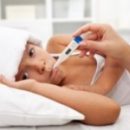Often, young parents, having seen a rash on the skin of his outacked child, wondering or fall into panic. After all, rash often accompanies infectious diseases, such as scarletin, cortex, chicken pox, rubella. That's about rubelly, it will be discussed in this article. What symptoms are characteristic? How she proceeds? What is dangerous for pregnant women and embryo? Let's try to figure it out.
General information about the disease and a bit of history
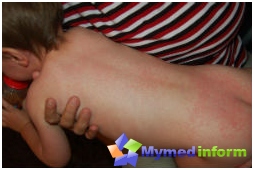
Rubella - acutely occurring disease of infectious nature, most often found in childhood, in adults it is much harder, can arise in women waiting for a child, which is extremely undesirable. For rubella, the rashes of red or pink, inflammation of the throat or nose, an increase in the size of lymph nodes, most often on the back of the neck and the occipital region. Learning rubella are engaged in long ago, articles about it appeared in the reference books on medicine about the XVI century, and only in 1829 the Doctor pointed out how to distinguish it from measles and Scarlay. Researchers from Japan in 1938 proved that the virus causes redness, his family was studied in 1961. Ophthalmologist from Australia installed in 1941 that this disease is very dangerous for a pregnant woman and fetus and can cause a lot of heavy pathologies. Anti-penette vaccine was created in the early 70s.
The causative agent is the representative of the Rubi virus. From here and went the second name of the disease - the rubble. Pediatricians noticed that most often put this diagnosis in winter or spring. In cities, rubella is more ill than in villages and villages.
As the infection occurs?
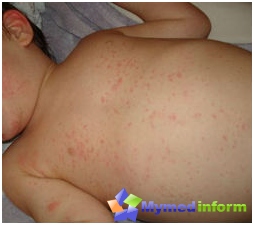
You can get infected only from a sick child or an adult with direct contact. Muslim virus in external environment, so infection through toys, dishes, bed linen, towels are impossible. The sick person highlights the robust virus into the air when talking, sneezing, high Cough, Here is this air-drip way the pathogen tries to embroider on the mucous membranes of another person. Infection can occur from a sick mother through a placenta to the fetus, which is very dangerous due to the risk of malformations and deformities (the so-called teratogenic effect of the virus). Also readers our site should be aware that the virus woman can be a breast child with a congenital form of this disease. Moreover, in such cases, the virus is able to live in the baby for a long time - up to 24 months, and recent studies show that the virus can stand up to 30 months, such a long virons.
Most susceptible to rubella children from year to seven years. Then it is also possible to infection, the susceptibility is high and in women of childbearing age. Until the year, the kids sick rubella less often, since they are transferred to antibodies from Mom, if she was grafted or had immunity, since she had previously suffered a rubella.
Symptoms of rubella
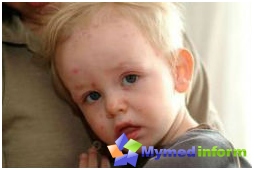
The causative agent falls on the mucous membranes of the nose or throat, then penetrates the lymph nodes and begins to actively multiply.
Therefore, in the first phase of the disease, the lymph nodes are usually beginning to increase, located on the back of the head, neck, near the ears. This is already a signal for parents. In the future, the increase in lymph nodes can achieve and the values of walnut. Then the virus spreads through the bloodstream, amazing and skin cells.
The incubation period on average lasts 16-21 days, sometimes it decreases to 11 days or increases even up to 25 days. These days there is a danger of infection with a virus from a patient.
In the first three days, the child appears symptoms, common for colds - the baby becomes sluggish, plaqueless, loses appetite, whimshes, does not want to play, quickly gets tired. Temperature column stops at a mark to 37.5 degrees. The child may complain that he hurts to swallow that sadness and tickles in the nose and throat. Pinkish or bright red specks are noticeable in the sky. It happens, the child's tertaries, they can redden from it and get to get. Sometimes he applies his hand to his head, apparently, pain arise. It can be sneezing, runny nose and passing, most often without sputum. First, there may be an impression about the usual Costood. In adults, loss are added to these symptoms in radiation and crew joints, pain in the legs (due to intoxication), reduced mood. And on the third day of the disease, its main diagnostic symptom appears - suddenly and quickly propagating small rash. At first she was noticed on the face (cheeks, the area behind the ears, on the back of the head, the forehead, the hairy part), then the rash is lowered on the neck, moving on, capturing the back and limbs. As a rule, it does not happen on her palms and feet. Bright rash - pink or red. Its separate elements as dots or specks round or a little oval shape, they do not merge in the future, but sometimes cause itch. This is at that moment the body and struggles with infection, forming immunity and antibodies. During this period, the accumulation of a mercury thermometer stops at a mark from 38 to 39 degrees, and the lymph nodes continue to increase in volume. Rash also suddenly and leaves 1-3 days, not leaving and track. There are also hidden forms of rubella when all the symptoms are little pronounced.
As soon as the parents suspected rubella, you need to call the clinic and invite Dr. Home. Only a doctor who has the necessary knowledge will correctly diagnose. Do not drag the hospital ill, it will cause aggravation of the state and provokes the spread of infection on other people. Laboratory tests of blood (from vein) confirm the diagnosis.
Are there any characteristics of the disease in adults?
In adults, rubella is leaking harder, the temperature may be higher, raishes more, the unaware of brighter is pronounced. Sometimes rhythm of cardiac activity. Inflammation of the joints happen as complications (Arthritis), frequently and meningoencephalitis (inflammation of the tissues of the brain and the nervous system), pneumonia and ear inflammation joined the disease.
Infection during pregnancy

Very dangerous rubella for women who carry a child. They have a disease in hidden (almost without visible symptoms), light or severe (with complications) form. If a woman gets sick in the fourth week of pregnancy, when the embryo form organs and components of the eyes, the hearts, the ears, the fetus may have congenital rubella, which, most often, accompany the deafness (or hearing impairment), cataract (clouding or other changes in the structures of the visual system), heart defects, developmental delays and other pathologies. Modern methods of blood research Mom and the fetus (seroimmunology) will allow a doctor and a woman to resolve the question of how to continue to do - continue pregnancy or not. In order not to be in such a situation, the future mother should be done all possible to prevent rubella infection. And if the eldest child got sick, then the woman is better to temporarily eliminate contact with him, and all the concerns about the child are assigned to her husband or relatives.
Tactics of treatment and care recommendations
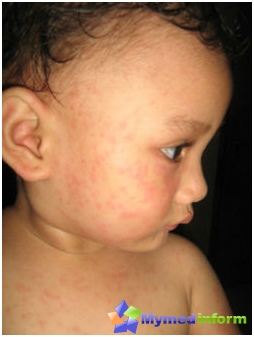
If there is no complications, then the room in the hospital during the course of the disease is not required. Then in specific methods of treatment of rubella do not need. The thing is that the body itself must develop antibodies and overcome viruses, creating persistent immunity for many years. In the first days, the child must be in bed under the supervision of adults. Peace and sleep will have a favorable effect that promotes rapid recovery. For the entire period of the disease, the patient is isolated from a children's or working team. Nutrition should be giving gentle that the food does not require high costs of the body for digestion. And if the patient has no desire to eat, then do not insist. It means that the body threw all the forces to destroy viruses, he does not want to spend energy to split products.
The time will come when it is necessary to replenish the reserves of nutrients, so by this moment and the appetite and the feeling of hunger will come back. Then it is appropriate to offer a patient with fruits and vegetables with vitamins, micro- and macroelements. Rosehip syrup recommended, multivitamins. Do not forget to abundantly drink baby tea, fresh juices. You can make fruits or compotes from currant, lingers, cranberries. Sometimes the doctor will advise symptomatic treatment - droplets in nose with anti-inflammatory effect, syrups and cough medicine («Bronchikum», «Stoptussin», «Perstissin»). If the rash with itching and abundant, then the doctor will write antihistamine drugs, for example, Tueva, Supratine, diazoline. If the joints are sick, it is possible to use ibuprofen. MyMedinform readers.COM should remember that flush below 38.5 degrees should not, the body specially creates such conditions in the internal environments so that the virus died. Questions about appointment of pharmacy addicts. If larger lymph nodes are very concerned, there is a dry heat overlap. Film medicine, such as vitamin tea with rosehip and rowan fruits. For adults and children after 7 years, it is recommended to make a collection with herbs with immunostimulating, anti-inflammatory and expectorant effect, for example, ninewide root, licorice root and altetic root. Ingredients take on a teaspoon, pour boiling water on one cup. Cover with a lid. Then after 25 minutes they fix and offer a patient. So several times a day.
But sick pregnant women are preferably under the control of medical workers. Some researchers argue that such women need to introduce gamma globulin (10-30 ml) so that the frurist fetus does not occur. But this appointment is not supported by all experts.
If the disease is complicated, the doctor can put the patient to the hospital.
Vaccinoprophilaxia
In Russia, there is a vaccine to prevent rubella disease, for the first time the injection is made at the age of a year to one and a half years, the second stage - at a six-year-old age. After three weeks, immunity is produced, which remained for 20 years in almost all grafted people. If in the blood of a woman is an insufficient number of antibodies against rubella, then immunologists advise to make another vaccination shortly before pregnancy planning.
These are the general information it is important to know about rubella. The following advice will help your child (or even an adult person) to recover faster. And the future mothers will have an idea of how to protect yourself and the fetus from a cunning virus so that the baby was born healthy.








